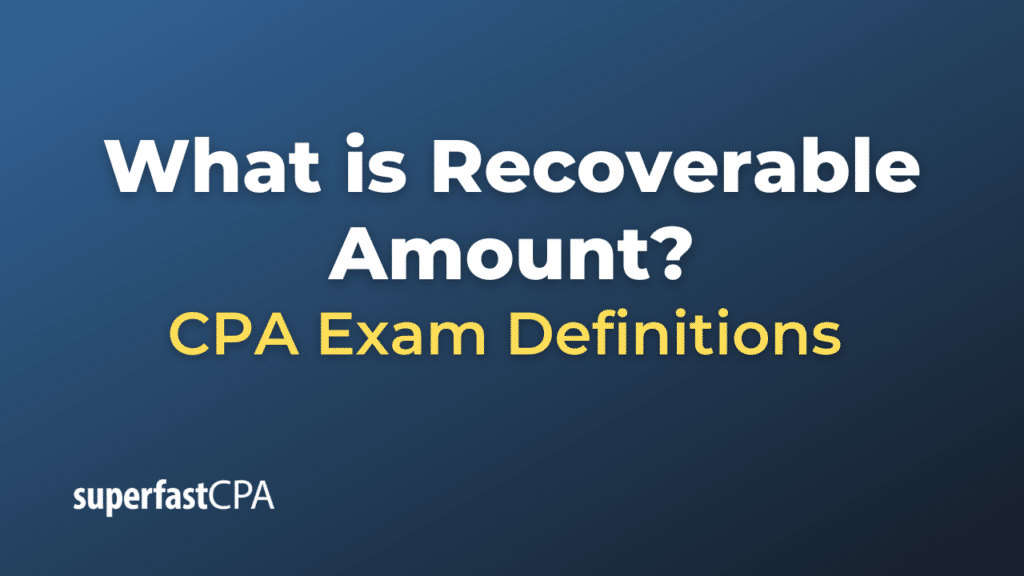Recoverable Amount
The term “recoverable amount” is often used in accounting, especially in the context of impairment of assets. The recoverable amount is the higher of an asset’s fair value less costs to sell and its value in use. If the carrying amount of an asset exceeds its recoverable amount, then the asset is considered impaired, and the entity must reduce the carrying amount of the asset to its recoverable amount.
Let’s break down the two components:
- Fair Value Less Costs to Sell: This is the amount that could be obtained from selling an asset in an arm’s length transaction between knowledgeable, willing parties, minus any direct incremental costs associated with the disposal of the asset.
- Value in Use: This is the present value of the future cash flows expected to be derived from an asset or cash-generating unit. It considers the future benefits an entity expects to derive from the asset, discounted to their present value.
Example of Recoverable Amount
Let’s take a real-world example involving a bookstore.
Example: Impairment of an Asset in “Readers’ Haven” Bookstore
Background: “Readers’ Haven” is a bookstore that has been around for two decades. A few years ago, they purchased a sophisticated book-sorting machine for $150,000. Due to the rise of e-books and online retailers, physical book sales have declined, and the bookstore’s operations have been affected.
The management suspects the book-sorting machine might now be impaired and decides to perform an impairment test.
Determination of Recoverable Amount:
- Fair Value Less Costs to Sell:
- After consulting with machine sellers and considering the age and condition of the machine, “Readers’ Haven” estimates they could sell the machine for $100,000.
- However, there would be $10,000 in associated costs (like transportation, brokerage, and refurbishing) to prepare the machine for sale.
- Thus, the fair value less costs to sell is $90,000 ($100,000 – $10,000).
- Value in Use:
- The management does a forecast of the cash flows the machine is expected to generate for the bookstore over its remaining useful life. Given the declining book sales and considering all the associated costs and benefits of the machine, the present value of these future cash flows (or the value in use) is determined to be $95,000.
- Recoverable Amount:
- The recoverable amount is the higher of the fair value less costs to sell ($90,000) and the value in use ($95,000).
- In this case, the recoverable amount is $95,000.
Comparison with Carrying Amount:
- The book-sorting machine’s carrying amount on the bookstore’s balance sheet is currently $120,000.
- Since the carrying amount ($120,000) is greater than the recoverable amount ($95,000), the machine is considered impaired.
- Readers’ Haven” would need to recognize an impairment loss of $25,000 ($120,000 – $95,000) in its income statement.
- The carrying amount of the machine on the balance sheet would be adjusted downward to $95,000.
By adjusting for impairment, “Readers’ Haven” ensures that its assets are accurately represented on the balance sheet, providing a clearer picture of its financial health to stakeholders.













